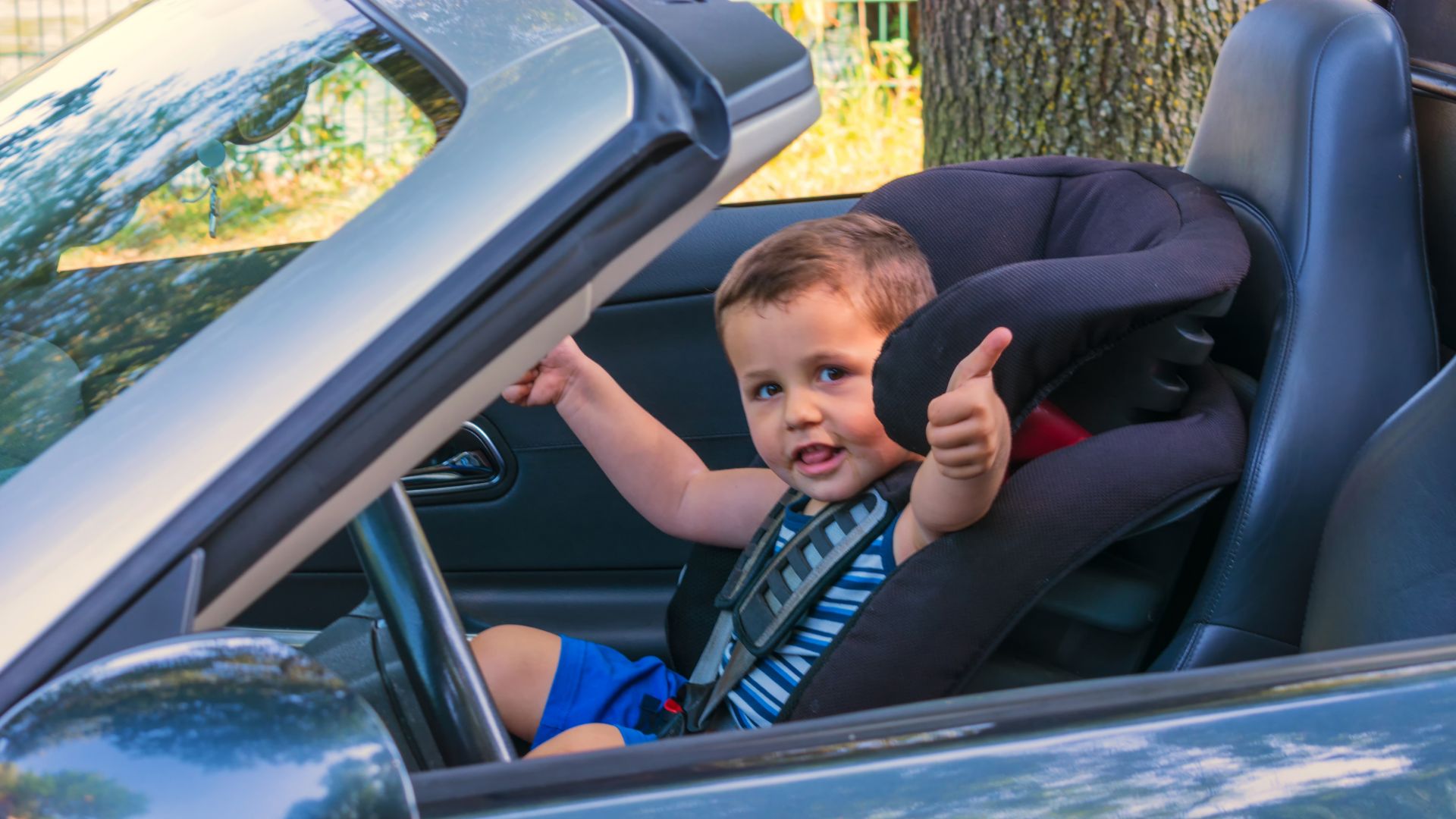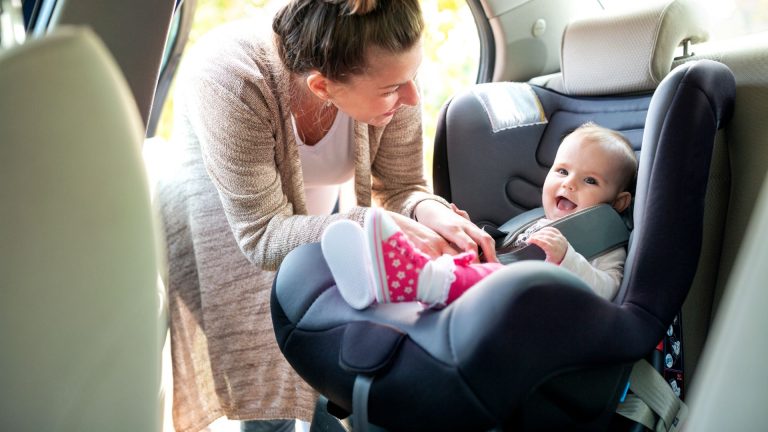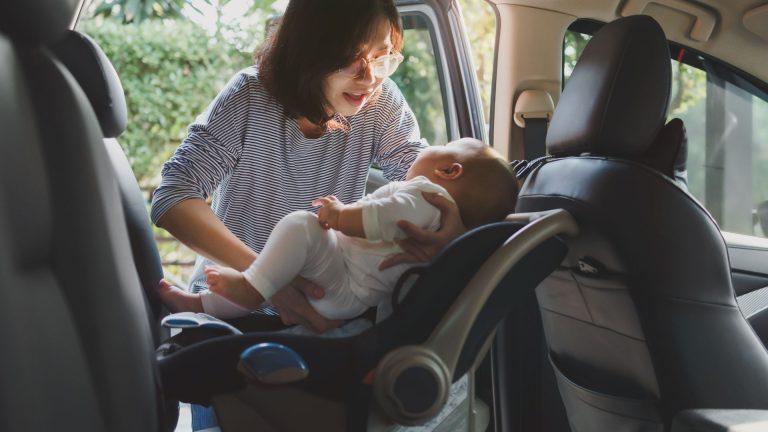Convertible car seat vs. infant car seat — difference explained
Learn about the key differences between convertible car seats and infant car seats.

There are two kinds of car seats for babies: convertible and infant car seats. These seats are generally safe for infants; however, you must consider some essential factors when shopping for your infant’s car seat. These factors have to do with the portability, size, and duration of car seat use.
A car seat is a necessary gear purchase for a new parent. Choosing a car seat for a baby is a highly significant safety decision a parent or guardian can make. Each type has its benefits and failures, but they are both safe for newborns. In this article, we will look at the differences between convertible car seats vs. infant car seats and which is best for you.
What are convertible car seats?

Convertible car seats have a maximum weight limit of 65 pounds, so you can use them for a long time until the baby gets transitioned to a forward-facing booster seat. A converting car seat is used in both forward-facing and rear-facing positions. If the baby is transitioning from a rear-facing to a forward-facing position, you must follow the weight and height requirements outlined in your seat manual.
If your child meets the minimum weight and height requirement, it does not necessarily suggest that they are prepared to sit in the forward-facing position. Until the time comes for your children to wonder how old you need to be to drive in a front seat, convertible seats should do the trick.
Are convertible car seats safe?
Convertible car seats are safe if they get installed correctly. However, the common mistake most parents or guardians make when using a convertible car seat is moving their baby from the rear-facing to the forward-facing position too early. If you do this, you can put the baby at risk of severe injury.
You must follow your car seat manufacturer’s recommendation for when to transition your child to the forward-facing position. We recommend that children ride in the rear-facing position until they have met the maximum height and weight requirement for the forward-facing.
What can you find in a convertible car seat?
If you wish to purchase a convertible car seat, there are a few factors you should look out for. Some of them include the following;
Safety feature
There are unique safety features that you should look out for when purchasing a convertible car seat. The safest seats come with a five-point harness, a steel reinforced frame, and additional layers of side impact protection.
LATCH
Most convertible car seats are compatible with the LATCH installation system. We recommend purchasing a different seat if you notice that your desired car seat does not feature LATCH.
Size
Most convertible car seats come in bigger sizes. Most parents make the common mistake of buying a car seat that does not fit in their car. You can measure the length and width of the seat you will use to install the car seat and find a convertible car seat that fits within those parameters.
What are infant car seats?

An infant car seat is a rear-facing car seat made for infants. Most of their car seats have a maximum weight limit ranging from 22-35 pounds. Infant car seats are the primary kind of car seat that parents start with.
These seats are composed of two components: the infant carrier and the base. The infant carrier can be easily detached from the base and installed into strollers and rockers, so you do have to carry the carrier around at all times.
Most infant car seats are manufactured to serve the purpose of a universal device, meaning they get attached to bases different from their own. This makes it easier to move your car seats from vehicle to vehicle without struggling to get and uninstalling them.
Are infant car seats safe?
If infant car seats are used correctly and installed adequately, they can be very safe for you. It would help if you used infant car seats only in rear-facing positions.
If your child has exceeded or reached the weight and height requirements outlined by the car seat manufacturers, that will be the only time you can transition the child to a forward-facing car seat. Infant car seats can become unsafe when parents use the infant carrier for purposes other than transporting their child.
Parents make a common mistake by leaving their babies in the carrier for so long. It is important to note that you shouldn’t use carriers for feeding, sleeping, or other purposes besides transportation.
Why should you choose a convertible car seat?
Convertible seats are highly durable as they last for a long time, so you would not have to stress about buying a new car seat after your child outgrows their infant car seat. Since convertible car seats get used from infancy, most have additional safety features to accommodate newborns and toddlers.
Convertible car seat pros
The following are the pros of convertible car seats that make them an efficient item.
- Convertible car seats are appropriate if you want to invest in one car seat that will last for several years. If you can convert the convertible seat from forward-facing to rear-facing, you can use the same version from the day of your infant’s birth until they move to a booster seat.
- Convertible car seats get installed rear-facing and then converted to a forward-facing position until your child outgrows the height and weight limits. Based on the model, convertible car seats can fit infants up to 65 pounds in the forward-facing setting.
- Convertible car seats can have greater height and weight limits for the rear-facing setting than infant car seats.
Convertible car seat cons
It is important to note that whichever convertible car seat model you choose, you should always keep safety in mind. Using a car seat that has missing parts, has been in a crash, or has been recalled can put your child at risk of danger. The following are some of the disadvantages of convertible car seats.
- Convertible car seats are usually bulkier and more prominent than infant car seats
- They are not designed for portability as they do not have carrying handles like infant car seats and are not manufactured to get quickly taken out of the car they get installed in.
- Convertible seats are harder to move from car to car, and they use more space than infant car seats.
- They usually recline to a safe angle for babies, which can pose a problem in smaller vehicles.
Why should you choose an infant car seat?
Infant car seats are highly recommended due to their rear-facing only positioning, and they are incredibly convenient. You can easily remove them from their base, so you don’t have to uninstall them to move them. Most infant car seats are manufactured to fit different types of bases so that they can get installed in other vehicles.
Infant car seat pros
The following are benefits associated with using an infant car seat.
- Infant car seats are usually more compact and smaller. There can be a better option if you want to make frequent trips with your child and you need something portable.
- Infant car seats are very convenient if you move car seats from car to car frequently.
- You can use many infant car seats with a travel system. It indicates that the seat can come out of the vehicle and fasten into a stroller frame. You can keep your baby buckled in when you leave your car.
Infant car seat cons
Before purchasing an infant car seat model, it is essential to research its drawbacks to avoid unpleasant situations in the future. The following are cons associated with using an infant car seat.
- Your infant can outgrow an infant car seat more than a convertible one.
- Several brands and models of infant car seats have ranges of size limits. Usually, infant car seats have smaller size ranges for babies.
Car seat safety tips
It is vital to keep the following safety tips in mind when installing a car seat.
- Ensure that your car seat gets installed tightly. The seat should not move more than one-inch front-to-back.
- Use the correct harness straps. The harness straps should be positioned at or below your baby’s shoulders for a rear-facing seat. If the harness is strong enough, your fingers will slide off, but if it is loose, you can pinch the webbing between your fingers.
- Find the correct recline. You should recline car seats safely to prevent the baby’s head from falling.
It goes without saying that keeping a safe speed to drive a car is also crucial for providing a safe and comfy ride for your little ones.
Our take
Purchasing a car seat can be a stressful task, but with the correct information, it can be an easy experience. Convertible and infant car seats are commonly known, and it is vital to know the difference between them to ensure that your child rides in the car safely.
It is also crucial that a child rides in the rear-facing position for an extended period before transitioning to a forward-facing convertible car seat.
Is it better to have an infant car seat or a convertible?
Both car seats offer safety and durability features. However, convertibles provide better head protection action for children.
Can convertible car seats be used for infants?
You can use convertible car seats for infants. They are safe to use if they are correctly installed and rear-facing.
Is an infant seat or convertible car seat safer?
Convertible car seats are safer since they keep children in the rear-facing position and provide adequate protection.
Are babies more comfortable in a convertible car seat?
Babies are more comfortable in convertible car seats since the seats have an excellent design to keep babies comfortable and protected.